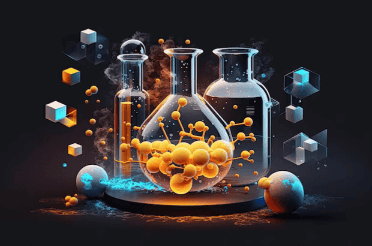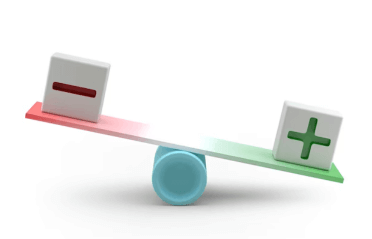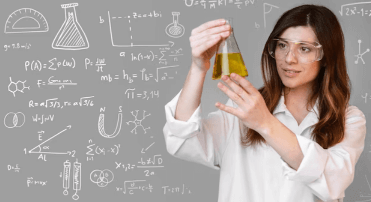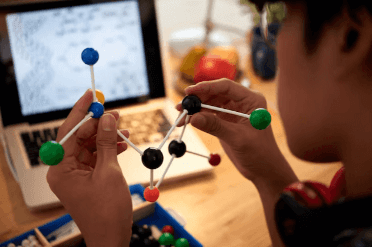Question
a.
12
b.
17
c.
19
d.
23
Posted under Basic Chemical Engineering
Interact with the Community - Share Your Thoughts
Uncertain About the Answer? Seek Clarification Here.
Understand the Explanation? Include it Here.
Q. In a reactor two stream are entering, one with H₂ at 10 atm and 27°C, and another with O₂ at 10 atm and 0°C, producing H₂O₂, H₂O, and O₂ at 10 atm and 23°C, what are the total...
Similar Questions
Explore Relevant Multiple Choice Questions (MCQs)
Q. In a reactor two stream are entering, one with N₂ at 10 atm and 27°C, and another with O₂ at 10 atm and 0°C, producing NO, NO₂, NO₃, and O₂ at 10 atm and 23°C, what are the total degrees of freedom?
View solution
Q. In a reactor two stream are entering, one with S at 10 atm and 27°C, and another with O₂ at 10 atm and 0°C, producing SO₂, SO₃, and O₂ at 10 atm and 23°C, what are the total degrees of freedom?
View solution
Q. In a reactor two stream are entering, one with H₂ at 10 atm and 27°C, and another with O₂ at 10 atm and 0°C, producing H₂O at 10 atm and 23°C, what are the total degrees of freedom?
View solution
Q. If the reactions are unknown, is it possible to determine the degrees of freedom?
View solution
Q. In a reactor two stream are entering, one with CH₄ at 10 atm and 27°C, and another with O₂ at 10 atm and 0°C, producing CO₂ and H₂O at 10 atm and 23°C, what are the total degrees of freedom?
View solution
Q. In a reactor two stream are entering, one with C₆H₆ at 10 atm and 27°C, and another with H₂ at 10 atm and 0°C, producing C₆H₁₂ and H₂ at 10 atm and 23°C, what are the total degrees of freedom?
View solution
Q. In a reactor two stream are entering, one with C₆H₆ at 10 atm and 27°C, and another with H₂ at 10 atm and 0°C, producing C₆H₆, C₆H₁₂, and H₂ at 10 atm and 23°C, what are the total degrees of freedom?
View solution
Q. In a reactor two stream are entering, one with CO₂ at 10 atm and 27°C, and another with H₂O at 10 atm and 0°C, producing CH₄, CO₂, H₂O, and O₂ at 10 atm and 23°C, what are the total degrees of freedom?
View solution
Q. What is the sensible heat of a reaction if the enthalpy of outputs is 15 J, and enthalpy of inputs is 5 J?
View solution
Q. What is the sensible heat of a reaction if the enthalpy of outputs is 5 J, and enthalpy of inputs is 10 J?
View solution
Q. What is the heat of reaction if enthalpy of inputs and outputs at 25°C are 10 J and 20 J, the enthalpy of input and outputs at given temperature are 25 J and 30 J, enthalpy change of reaction is 50 J?
View solution
Q. What is the heat of reaction if enthalpy of inputs and outputs at 25°C are 5 J and 8 J, the enthalpy of input and outputs at given temperature are 12 J and 15 J, enthalpy change of reaction is 25 J?
View solution
Q. What is the heat of reaction if enthalpy of inputs and outputs at 25°C are 10 J and 8 J, the enthalpy of input and outputs at given temperature are 5 J and 20 J, enthalpy change of reaction is 30 J?
View solution
Q. Theoretical flame temperature is defined for which process?
View solution
Q. What is the heat for the process for which theoretical flame temperature is defined?
View solution
Q. How much the limiting reactant reacts in the process for which theoretical flame temperature is defined?
View solution
Q. What are other effect occurs in the process for which theoretical flame temperature is defined?
View solution
Q. If the temperature of the reaction is 25°C what will be the temperature of the products of the reaction for which theoretical flame temperature is defined?
View solution
Q. If the temperature of the reaction is 50°C what will be the temperature of the products of the reaction for which theoretical flame temperature is defined?
View solution
Q. What is the heat transferred for a 10 mole unsteady state closed system, if change in internal energy is 5 J/mole?
View solution
Recommended Subjects
Are you eager to expand your knowledge beyond Basic Chemical Engineering? We've handpicked a range of related categories that you might find intriguing.
Click on the categories below to discover a wealth of MCQs and enrich your understanding of various subjects. Happy exploring!








